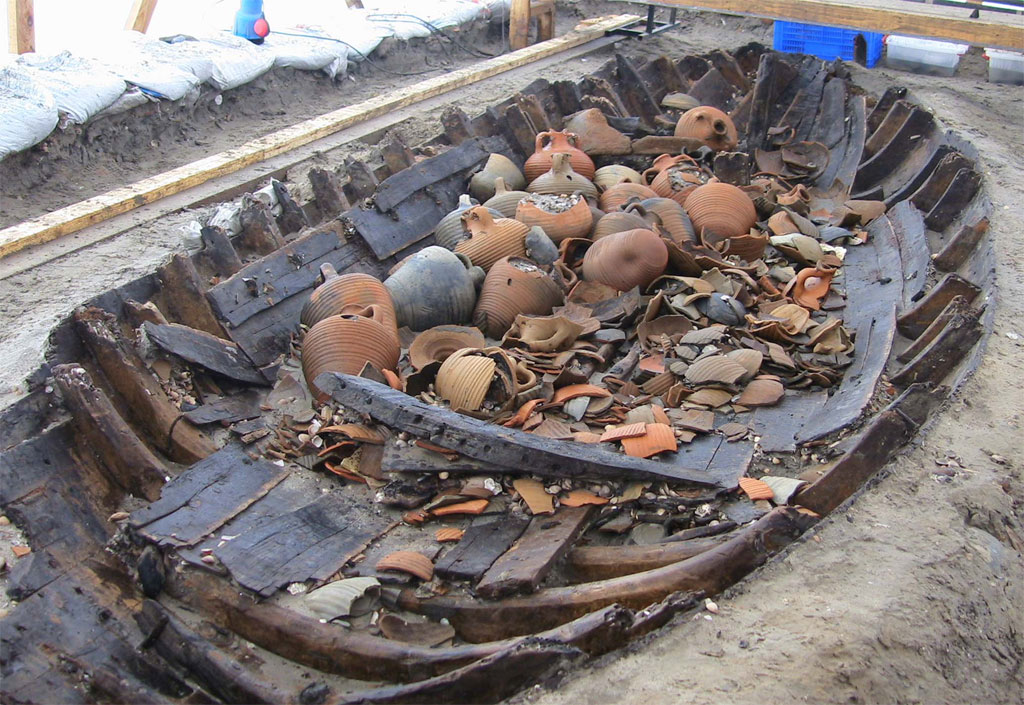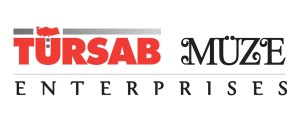Footprints… eight thousand years old… meters under sea level… that finding was briefly reported on the media. but the world of science was fascinated by this exciting discovery.
“A small step for me, but a huge step for mankind!” commented Neil Armstrong on 20th July 1969 as he was setting foot on the moon.Maybe the footprints unearthed in İstanbul cannot compete with the first footsteps on the moon, but they amount to a rare discov-ery of worldwide significance and a first for İstanbul.The excavations carried out under the authority of the Museums of Archaeology of İstanbul were brought on the agenda before, on the occasion of various finds at Yenikapı. But this time, the case in point is a very significant historical discovery.Human footprints were found on clay soil in a layer 8,2 meters under sea level, dated to the period between 6300 -5500 BC, prob-ably left behind by the first inhabitants of İstanbul, having lived here and worn sandals 8 thousand years ago.
This exciting discovery was made possible thanks to nature’s blessing. The footprints were in an area unreached by the sea during that period. Although the area was later covered by sea, the footsteps had dried long-time before and were preserved intact on clay soil under water.Archaeologists from around the world are among participants of the excavation work. They are all very excited. The footprints discovered here will allow the world of science to trace back the “footsteps” of mankind’s cultural journey. The proud leader of the excavation team, Director of the Museums of Archaeology of İstanbul, Ms. Zeynep Kızıltan talked to MÜZE DERGİ about their achievements.
MÜZE DERGİ:The diggings in İstanbul for the construction of Metro and Marmaray underground systems led to extraordinary archaeological discoveries. Would you tell us about this process?
ZEYNEP KIZILTAN:Our excavations actually started in 2004 at Yenikapı, Sirkeci and Üsküdar Square before the Marmaray and Metro projects. These projects forced us to speed up our work which expanded to a larger area. The excavations performed on 30 thousand square meters in the Langa (Vlanga) vegetable gardens area at Fatih district’s Yenikapı neighbourhood carried on until 2011. The Theodosius Harbour, one of the principal ports of Constantinopolis, was uncovered there. Having been in use from 4th to 7th century AD, it was progressively filled and eventu-ally landlocked due to alluvial deposits from the Lycos, present-day Bayrampaşa brook. Today it is part of mainland at a distance of 1,5 km from seaside. The area in-between filled with alluviums served as fertile ground for vegetable cultivation. The alluviums shortened the existence time of the harbour, but rendered a great service to archaeology. The shipwrecks and articles spilled over from ships, covered with clayish earth, were well preserved, so that we found 35 wrecks and numerous objects in relatively good condition. The preservation of all these artefacts was made possible thanks to this natural phenomenon. We now possess one the world’s largest antique shipwreck collections. West of the Yenikapı digging area, we also found ruins of a pier and landing deck. At the metro construction site, we came across ruins of a church from the 12th-13th centuries AD.
MÜZE DERGİ:Which artefacts did you discover at these excava-tions?
ZEYNEP KIZILTAN:During the Yenikapı excavations connected with the Marmaray and Metro projects, we uncovered 35 thou-sand artefacts until 2011. These items reveal valuable information on commercial relations, technology, daily life, economy and religious beliefs of the era. 2 thousand 500 of these pieces consist of some clothing items and articles of daily use such as wooden clogs, leather sandals, combs, spoons, scale weights, lead inscription tablets, crosses, bowls ornamented with Jesus depic-tions, articles made of ivory, bone and wood. The tombs and human and animal skeleton parts found scattered in the area give us important clues concerning the period’s demography and socio-economic conditions.
MÜZE DERGİ:Which Neolithic Age artefacts were found at Yenikapı excavations?
ZEYNEP KIZILTAN:During the diggings underneath the bedrock, the bottom of Theodosius Harbour, we reached a depth of 6 meters under current sea level. There, we found architectural ruins, pottery, stone and wooden articles from prehistoric age. The wall ruins we found, consisting of orderly assembled stones, were typical of the architectural tradition of the Neolithic Period. The pottery, tombs and burial urns (containing the ashes of cremated dead bodies) presented close similarity with those originating from the formerly discovered “Fikirtepe Culture” and the “Yarımburgaz 4” Neolithic settlements of the İstanbul region. The Yenikapı artefacts representing the era of the ‘first agricultural communities’ found for the first time within the boundaries of İstanbul’s historic peninsula, are not only relevant to İstanbul’s history, but also of great interest regarding the anthropological history of the European continent. We also came across the first Anatolian wooden articles in the same cultural layer. We determined that the Neolithic settlement was in fact established at Yenikapı’s current location, not too far from the shore, during an era where Marmara did not yet merge with salty waters.
MÜZE DERGİ:Which details on the daily life and religious beliefs of the first settlers of İstanbul were revealed through the discovery of Yenikapı Neolithic Settlement?
ZEYNEP KIZILTAN:Yenikapı excavations offered us the possibil-ity of studying burial methods of the Neolithic Age. Methods consisting of putting the dead body in embryo posture in large earthenware vessels as well as cinerary urns were found side by side in the same space. We are still trying to determine whether the two different burial methods reflect two different aspects of the same culture or whether they represent two different cultural contexts. The Marmaray excavations can be qualified as leading light for the overall evaluation of human history, and of the last 10 thousand years’ natural environment. Above all, we discovered human footprints on clay soil, at a layer 8,2 meters under sea level. We established that the layer with the footprints dried before the sea bottom was covered with sand and this natural phenomenon allowed the preservation up until our days of these footprints. This is the first known example of footprints found during an excavation in Turkey, a very rare discovery in itself.
MÜZE DERGİ:Which one of these various discoveries was the most exciting from an archaeological stand?
ZEYNEP KIZILTAN:The Neolithic Age footprints constitute the foremost discovery originating from Yenikapı excavations. They lend a tangible identity to the abstract notion of İstanbul’s first inhabitants having lived here 8000 years ago. They paved the way to the meeting of history’s “footsteps” with our present time. The artefacts from Theodosius Harbour and vicinity are important in analyzing Neolithic settlements’ characteristics and ethnographic history. In short, Yenikapı excavations contributed greatly to the history of İstanbul, one of world’s oldest urban agglomerations.
MÜZE DERGİ:Did only Turkish archaeologists participate in these efforts?
ZEYNEP KIZILTAN:At the excavations carried out uninterrupted since 2004 under the leadership of the Archaeological Museums of İstanbul, operating sometimes in three successive daily shifts, work hundreds of workers, archaeologists, art historians, curators, restoration experts and architects, together with experts and scientists from relevant departments of various Turkish and foreign universities. The Marmaray and Metro archaeological excavations, which are completed to a great extent, are still being conducted without interruption by the experts of our museum, thanks to their commitment and dedication, in spite of the existing difficulties.
This article has originally appeared in “Müze” Magazine, published quarterly with the contributions of the Ministry of Culture and Tourism. We would like to thank TÜRSAB Museum Enterprises for sharing this piece with Istanbul Digital Platform followers.




















